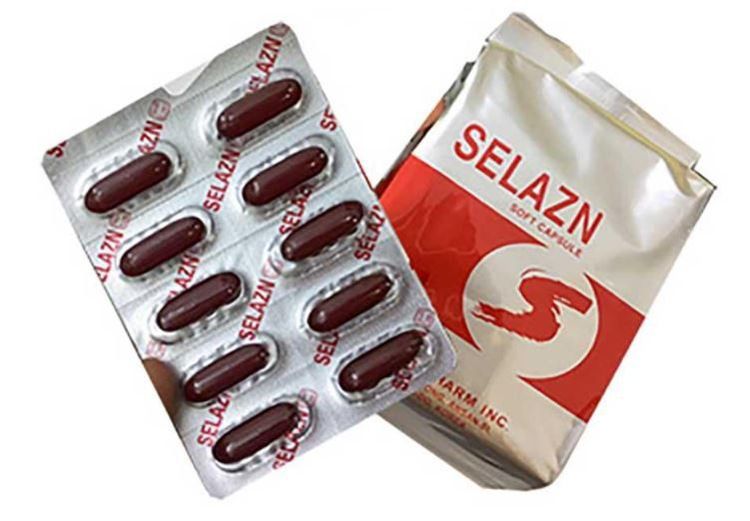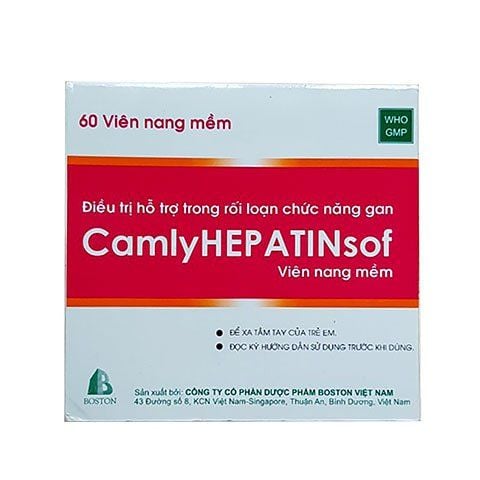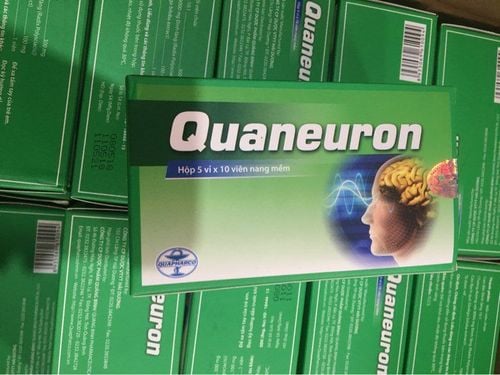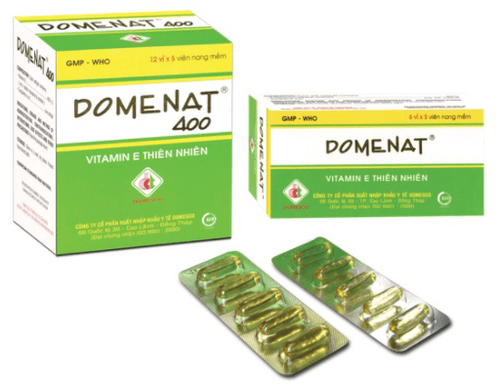This is an automatically translated article.
Selazn medicine has the main ingredients of β-carotene, selenium, vitamins E and C, helping to supplement essential vitamins and minerals as well as supporting physical and mental health.
1. What does Selazn do?
Selazn drug has main ingredients including β-carotene, selenium, vitamins E and C. Each ingredient has many important biological roles in the body.
Effects of ascorbic acid (vitamin C):
Impact on redox reactions of the body: The functions of ascorbic acid are mainly involved in redox biochemical reactions. Effects on Cardiovascular Disease: Hyperoxidative stress plays an important role in the pathogenesis of cardiovascular diseases, with particular evidence that oxidative modification of LDL and other lipoproteins promotes the development of cardiovascular disease. atherosclerotic LDL. Vitamin Cs can inhibit LDL oxidation in vitro by dehydrating ROS and RNS, preventing them from attacking LDL. Effects on WBCs and Inflammation: The presence of vitamin C in leukocytes is important because ROS produced during phagocytosis and neutrophil activation are involved in infectious stress or inflammatory response. . The intracellular concentration of ascorbate in leukocytes helps to counteract the oxidative damage associated with respiratory failure. Vitamin C can neutralize phagocytic-derived oxidants without inhibiting the antibacterial activity of macrophages. Vitamin C also plays a role in the expression of genes that regulate collagen, the secretion of cellular procollagens, and the biosynthesis of connective tissue components in addition to collagen including fibronectin, elastin, proteoglycans, and muscle. bones,... A lack of ascorbic acid leads to scurvy. The structure of collagen (the collagen) is affected first and lesions develop in the bones and blood vessels. Taking vitamin C can help eliminate symptoms caused by ascorbic acid deficiency. Vitamins are involved in the synthesis of certain substances such as corticosteroids and aldosterone into bile acids, regulation of prostaglandin synthesis, conversion of folic acid to folinic acid, and synthesis of lipids and proteins. Ascorbic acid also regulates iron absorption, transport and storage. Effects of vitamin E:
Antioxidant action: Vitamin E is believed to act as an antioxidant, preventing the propagation of free radical reactions. Vitamin E is a peroxyl radical scavenger, specifically protecting polyunsaturated fatty acids and oxygen-sensitive substances such as vitamins A and C from oxidation. There is evidence that oxidative reactions can be harmful to cells at high concentrations, contributing to chronic diseases and cellular dysfunction. Several chronic diseases are related to stress and oxidative stress including cancer; cardiovascular disease (coronary atherosclerosis and heart disease, asthma, Alzheimer's disease, Parkinson's syndrome, cataracts, etc.), however currently there is not enough evidence to definitively establish an association . Vitamin E also has a direct effect on tissue that is beneficial for blood vessel function. Effects on the immune system: Vitamin E inhibited the production of prostaglandin E2 and increased the immune response in mice. Furthermore, immune function declines with age, and vitamin E supplementation may reverse deficiencies in some individuals. Several studies have shown that vitamin E supplementation enhances immune responses in healthy older adults aged 65 and older, as well as young adults. Harmful effects of vitamin E deficiency: Vitamin E deficiency is rare and usually occurs only in patients who cannot absorb or have a genetic abnormality that interferes with the maintenance of normal blood levels of the vitamin. Vitamin E deficiency does not cause specific disease in adults. Manifestations of vitamin E deficiency are mainly peripheral neuropathy characterized by muscle degeneration, erythrocytosis, or enhanced in vitro hemolysis by oxidizing agents. Effects of β-carotene:
β-carotene supports patients with hematopoietic protoporphyrin (EPP) metabolism disorders against the effects of severe photosensitivity (burning, edema, erythema, pruritus). , skin lesions). The drug has no effect on the underlying biochemical abnormality of FPP (i.e. the concentrations of protoporphyrins in erythrocytes, plasma and faeces will not be altered). The exact mechanism of this effect is currently unknown. There is some evidence that the increased photosensitivity may be due to the formation of activated singlet oxygen and/or free radicals. Several in vitro studies suggest that β-carotene can block the activation of free radicals and oxygen, which may be the mechanism of action of the drug.

Thuốc Selazn có tác dụng hữu ích với sức khỏe con người
2. In what cases is Selazn indicated?
Selazn tonic can be prescribed in the following cases:
Enhance physical health and brain activity; Antioxidant; Helps prevent and support the treatment of diseases caused by vitamin A, C, E and selenium deficiency. Note that the drug is contraindicated in patients with hypersensitivity to any of the ingredients.
3. What is the dose of Selazn?
You can take Selazn tonic after meals. The recommended dose is 1 tablet once a day for adults. However, it should be noted that the above dosage is for reference only. The specific dose in each case will depend on the condition and the progression of the disease. You need to consult your doctor or pharmacist for the right dose.
If overdose of the drug can cause symptoms such as nausea, increased urinary oxalate, edema, cardiovascular obstruction. In case of overdose, it is necessary to immediately go to medical facilities for timely treatment to avoid dangerous complications. If you forget a dose, take it as soon as you remember. However, if it is almost time for your next dose, skip the missed dose and take your next scheduled dose. Do not take a double dose.
4. What are the side effects of Selazn?
Digestion: Ợ gas, nausea, vomiting, diarrhea, constipation, upset stomach; Skin: Red rash, itching, dry skin, swollen joints gout; Genitourinary system: Menstrual disorders, menorrhagia; Other: Increased risk of thrombosis in women taking estrogen contraceptives or in patients with thrombosis (due to vitamin E). When experiencing undesirable effects of the drug, the patient should stop using the drug and notify the doctor or go to the nearest medical facility for timely treatment.

Khi sử dụng thuốc Selazn người bệnh có thể gặp tình trạng ợ hơi
5. Notes when using the drug Selazn
In case of vomiting, diarrhea, itching caused by taking the drug, stop using and consult a doctor; Children only take the medicine as directed by the doctor; Patients who are being treated with special therapies and pregnant women must take the drug as prescribed by their doctor. Pregnant women taking more than 10,000 units of vitamin A can lead to birth defects in the fetus. Therefore, women who are pregnant or planning to become pregnant should not take vitamin A during the first 3 months of pregnancy or exceed 5,000 units/day (except in cases of vitamin A deficiency); Women who are pregnant or planning to become pregnant, women who are breastfeeding should be cautious and consult a doctor before taking this medicine. If selenium is taken in excess of the usual 75-150 μg dose, there is a risk of toxicity. Note not to use more than 200 μg Selenium/day; Drug interactions: Concomitant use of Selazn with anti-aldosterone or triamterene may increase urinary oxalate. Should not be used concurrently with drugs such as phosphate salts, Tetracyclines, calcium salts. The drug should be stored in a dry place, away from direct light, at a temperature below 30°C. In general, the drug Selazn helps provide vitamins C, E, vitamin A and selenium precursors, supports physical and mental health as well as prevents diseases caused by vitamin A, C, and E deficiency. You should not Self-medication without consulting a doctor, pharmacist before use.













